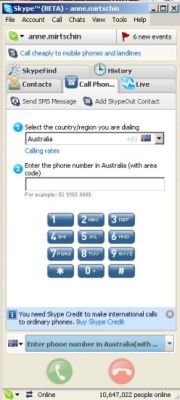Writing a blog does not mean being an expert. Writing a blog is about sharing ideas and resources with like-minded people. I learn a lot from other people’s blogs and I hope some people learn something from me.
Starting out in the bloggosphere can be daunting. You’ve got a few things to say but your work will be wasted if no one reads it. The world wide web is exactly that, so there is a huge potential audience for your writing. How do you find them and build up a community around your blog? Here are a few ideas.
Keep in mind though, that building a community is an ongoing process, so it is something that can always be reviewed and improved upon.
1. Find and join some networks and forums that focus on the topics you are writing about. Ning networks are the best place to start. I’m a member of several Ning networks. All you do is find one your are interested in, click on ‘Sign Up’ and then you will have your own profile page on which you can write about yourself and what you’re interested in and leave links to your blog. Also, every Ning network has discussion groups and forums with people asking questions all the time. Jump in and answer a few questions. People will then click back to your Ning profile to see who you are, and might click on the links to your blog.
Some great Ning networks to check out are:
Classroom 2.0
(On Classroom 2.0 you might want to find a group called ‘Digital Languages’ that I started. It hasn’t been very active so far, but we’ll get there!)
The Global Education Collaborative
For those of you in Australia, the EDNA network would be a great place to sign up to.
2. Join Twitter and feed your blogs posts directly to it through Twitterfeed. Twitter is a microblogging tool. You sign up for an account, start following people and basically answer the question ‘What are you doing?’ What actually happens is that you end up ‘tweeting’ (posting) useful links you’ve found and links to your blog and pretty soon you’ll have people that are following what you do. Twitter, although at first it sounds a little strange, has become absolutely huge and a fantastic way to find resources and meet people. There is a lot to write about Twitter, which I will do later. For now, just dive right on in!
3. Make sure Technorati is aware of your blog. Sign up for an account there and ‘claim’ your blog. Technorati is a search engine for blogs. Once you claim your blog you can add tags to it in your account to help Technorati find your blog more easily.
4. Leave comments on other people’s blogs. Bloggers do this a lot. If someone leaves a comment at my blog technoLOTE I usually follow the link to their website to see what they do and I usually email them to say thanks for commenting and to mention something I’ve seen on their blogs. (I said usually…I have a few outstanding comments to acknowledge! All in good time.) Leaving comments is probably one of the most powerful ways to grow your audience and your blog’s community. Not only will the writer of the blog read your comment, other people who are leaving comments will read yours too and might find themselves arriving at your blog!
5. Join MyBlogLog. Once you have an account and you have listed your blogs, you can search what blogs other people write and add yourself to their MyBlogLog community. You can see who is in someone else’s community and others can see if you’ve joined their community. This way, they may check out your profile and click through to your blog. My BlogLog and Ning Networks work in a similar idea to Facebook. You join, you have a profile, you read about others they read about you.
These are just a few places to get started. Other sites to look into would be Del.icious, Diigo and StumbleUpon for social bookmarking and the networks that go with it. Really, anywhere that you can join a network is a place where you can find potential readers for your blog.
This is by no means an exhaustive list and if you have other suggestions please leave a comment!




